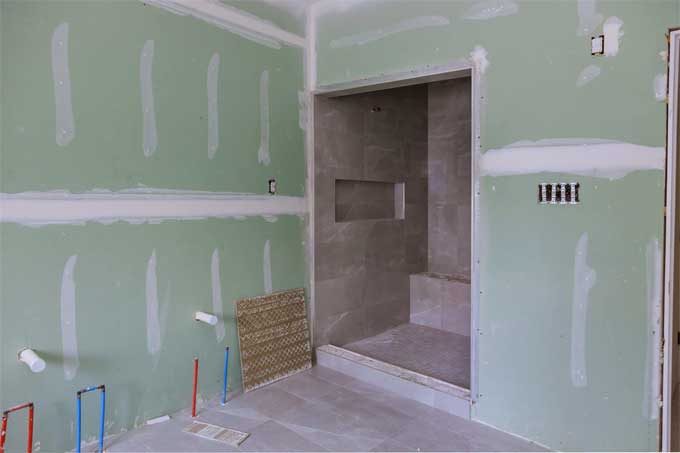
How Mold Resistant drywall works, what it consists of, and how to install

Mold resistant drywall is now available from building material manufacturers to combat this dangerous but all too common problem. Despite moisture rich environments, mold is unable to adhere to the material's surface.
Gypsum cores and non organic facings combine to make mold resistant drywall. As a result, mold spores cannot attach to the wallboard and embed themselves, as well as it does not provide the organic material mold requires spreading. As opposed to standard drywall, this has a paper face just the kind of organic material that molds love.
The price of mold resistant drywall is generally thirty to fifty percent higher than that of standard drywall. Although mold resistant drywall is an added expense, it is only necessary in certain areas and rooms of the home, such as bathrooms and laundry rooms, which are usually humid. An additional cost may be worth it if those areas experience leaks or high humidity levels.
Workflow of Mold Resistant Drywall
The function of mold resistant drywall is to discourage mold growth by creating an inhospitable environment. Mold cannot embed or feed on this type of drywall, even if the surface becomes damp from moisture or humidity within the room. In mold resistant drywall, the same core material as standard drywall is used, which is gypsum that is nonorganic and not flammable.
This material is composed of calcium sulfate di-hydrate and water, which is then pressed into long sheets covered with paper facings, fiberglass mesh, or wax embedded papers.
Fiberglass and a wax coating over a thicker paper face are both used for this purpose. In contrast, fiberglass is completely nonorganic, while wax prevents moisture and mold spores from penetrating the face of the drywall. It is called green board because it's moisture resistant rather than mold resistant.
Mold Resistant Drywall Installation
Almost the same steps are involved in installing mold resistant drywall as standard drywall. Drywall sheets need to be measured, scored, snapped, and cut to fit the wall. Once the drywall is installed, the installer screws or nails into the bare studs behind it.
The joints need to be taped and the fastener holes need to be muddied after all sheets are hung on the framing. Whenever possible, use fiberglass mesh tape for the joints when taping mold resistant drywall.
Mold can attach to paper tape because it contains organic material. Mold Resistant drywall is necessary for the joints & corners between walls and ceilings.
Applications of Mold Resistant Drywall
Mold resistant drywall isn't necessary for every area of the interior of a home, but some areas are worth considering. Mold-resistant drywall is ideal for areas with excessive humidity caused by appliances, fixtures, or environmental factors.
You should consider using mold-resistant drywall in kitchens, bathrooms, laundry rooms, mudrooms, and similar areas where moisture is constant. It may be worth using mold resistant drywall around appliances or fixtures that use water or create water through condensation.
If mold is likely to grow in basements or crawl spaces, consider using mold-resistant drywall. The warm, dark, and moist conditions make these spaces ideal for mold and mildew to grow.
To learn more, watch the following video tutorial.
Video Source: Cheryl Ciecko Architect
Wrapping it Up
Mold resistant drywall is ideal for areas and rooms that are prone to moisture and humidity. Though this material is more expensive than standard drywall, its mold resistance means it can reduce the chances of unhealthy conditions developing in the home. Just the protection it provides can justify the expense of investing in this building material.
It is natural for mold to grow in a home, but it can become a serious problem if left untreated. In a damp, oxygen rich environment, mold spores float through the air and embed themselves in organic material. The infection will spread quickly and can cause respiratory problems, allergic reactions, and many other serious health problems.


